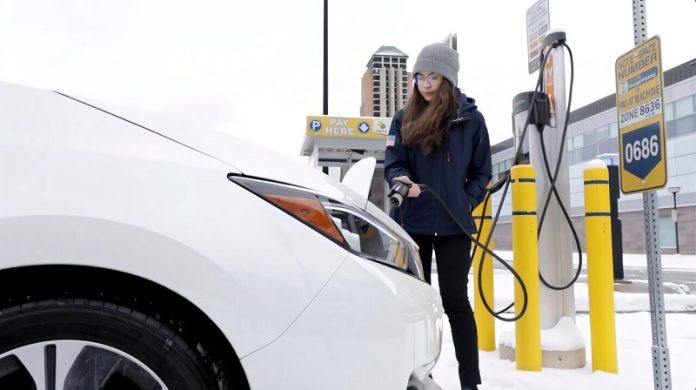
A new battery breakthrough from engineers at the University of Michigan could help electric vehicles (EVs) charge much faster—even in freezing weather.
This innovation could remove a major worry for people considering buying an EV: slow charging and reduced range in the winter.
The research team, led by Professor Neil Dasgupta, found a way to charge lithium-ion batteries up to 500% faster at 14°F (-10°C) without reducing how much energy the battery holds.
“We’ve shown that it’s possible to fast-charge EV batteries in cold temperatures without losing performance,” said Dasgupta.
The trick lies in how the batteries are built. Right now, cold temperatures slow down the movement of lithium ions inside the battery.
That makes it harder to charge and reduces power. Some EV makers try to fix this by making battery electrodes thicker, so they can store more energy. But this makes it harder for the lithium ions to move quickly, slowing charging even more.
Previously, Dasgupta’s team came up with a solution: using lasers to create tiny channels—about the width of a human hair—inside the battery’s anode, the part that receives lithium during charging.
These channels helped lithium ions move more easily, speeding up charging at room temperature. But in the cold, there was still a problem.
The issue was a thin chemical layer that forms on the surface of the anode during cold charging. Dasgupta compared it to cold butter: it’s hard to spread and causes a backup—like a traffic jam—of lithium metal, which lowers the battery’s performance and can damage it over time.
To solve this, the team added a super-thin coating of a special material made of lithium borate-carbonate—only 20 nanometers thick, which is thousands of times thinner than a human hair. This “glassy” layer stopped the chemical buildup and allowed the lithium to move freely, even in the cold.
When the team combined the coating with the tiny laser-drilled channels, they were able to charge test batteries five times faster in freezing conditions—and the batteries still kept 97% of their capacity after 100 quick charging cycles.
This new method could be added to current battery production lines with minimal changes, according to the researchers. That makes it easier for manufacturers to adopt.
Fast, reliable charging in cold weather could help boost EV sales, especially since recent surveys show fewer Americans are considering buying an electric car. Long charging times in winter are a big reason for this hesitation.
The research was done at U-M’s Battery Lab and supported by Arbor Battery Innovations, which is working to bring the new technology to market.



